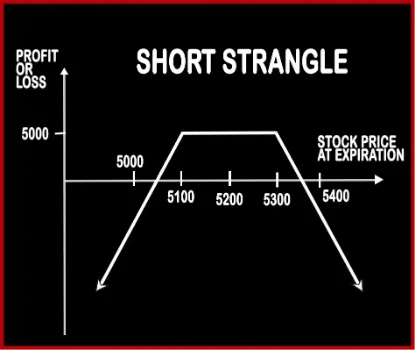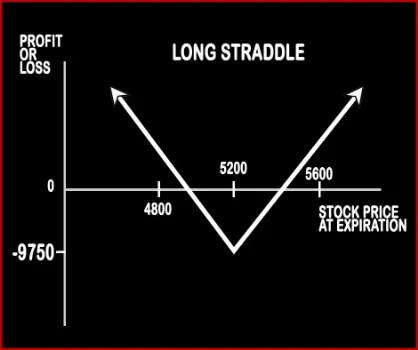Compare Strategies
| SHORT STRANGLE | LONG STRADDLE | |
|---|---|---|

|

|
|
| About Strategy |
Short Strangle Option StrategyThis strategy is similar to Short Straddle; the only difference is of the strike prices at which the positions are built. Short Strangle involves selling of one OTM Call Option and selling of one OTM Put Option, of the same expiry date and same underlying asset. Here the probability of making profits is more as there is a spread between the two strike prices, and if |
Long Straddle Option StrategyStraddle is neither bullish nor bearish strategy; it is a market neutral strategy. Here a trader wishes to take advantage of the volatility in the market. This strategy involves buying of one Call option and one Put option of the same strike price, same expiry date and of the same underlying asset. Now a trader is bound to make profits once stock moves in either direc .. |
SHORT STRANGLE Vs LONG STRADDLE - Details
| SHORT STRANGLE | LONG STRADDLE | |
|---|---|---|
| Market View | Neutral | Neutral |
| Type (CE/PE) | CE (Call Option) + PE (Put Option) | CE (Call Option) + PE (Put Option) |
| Number Of Positions | 2 | 2 |
| Strategy Level | Advance | Beginners |
| Reward Profile | Limited | Unlimited |
| Risk Profile | Unlimited | Limited |
| Breakeven Point | Lower Break-even = Strike Price of Put - Net Premium, Upper Break-even = Strike Price of Call+ Net Premium | Lower Breakeven = Strike Price of Put - Net Premium, Upper breakeven = Strike Price of Call + Net Premium |
SHORT STRANGLE Vs LONG STRADDLE - When & How to use ?
| SHORT STRANGLE | LONG STRADDLE | |
|---|---|---|
| Market View | Neutral | Neutral |
| When to use? | This strategy is perfect in a neutral market scenario when the underlying is expected to be less volatile. | This options strategy is work well when and investor market view is bearish. The strategy minimizes your risk in the event of prime movements going against your expectations. |
| Action | Sell OTM Call, Sell OTM Put | Buy Call Option, Buy Put Option |
| Breakeven Point | Lower Break-even = Strike Price of Put - Net Premium, Upper Break-even = Strike Price of Call+ Net Premium | Lower Breakeven = Strike Price of Put - Net Premium, Upper breakeven = Strike Price of Call + Net Premium |
SHORT STRANGLE Vs LONG STRADDLE - Risk & Reward
| SHORT STRANGLE | LONG STRADDLE | |
|---|---|---|
| Maximum Profit Scenario | Maximum Profit = Net Premium Received | Max profit is achieved when at one option is exercised. |
| Maximum Loss Scenario | Loss = Price of Underlying - Strike Price of Short Call - Net Premium Received | Maximum Loss = Net Premium Paid |
| Risk | Unlimited | Limited |
| Reward | Limited | Unlimited |
SHORT STRANGLE Vs LONG STRADDLE - Strategy Pros & Cons
| SHORT STRANGLE | LONG STRADDLE | |
|---|---|---|
| Similar Strategies | Short Straddle, Long Strangle | Bear Put Spread |
| Disadvantage | • Unlimited loss is associated with this strategy, not recommended for beginners. • Limited reward amount. | • There should be continuous movement of the stock and options price for this strategy to be profitable. • Time decay hurts long option if the strike price, expiration date or underlying stock are badly chosen. |
| Advantages | • Higher chance of profitability due to selling of OTM options. • Advantage from double time decay and a contraction in volatility. • Traders can book profit when underlying asset stays within a tight trading range. | • Unlimited potential beyond the breakeven point in either direction . • Book your profit from highly volatile stocks without determining the direction. • Limited risk, more profit. |